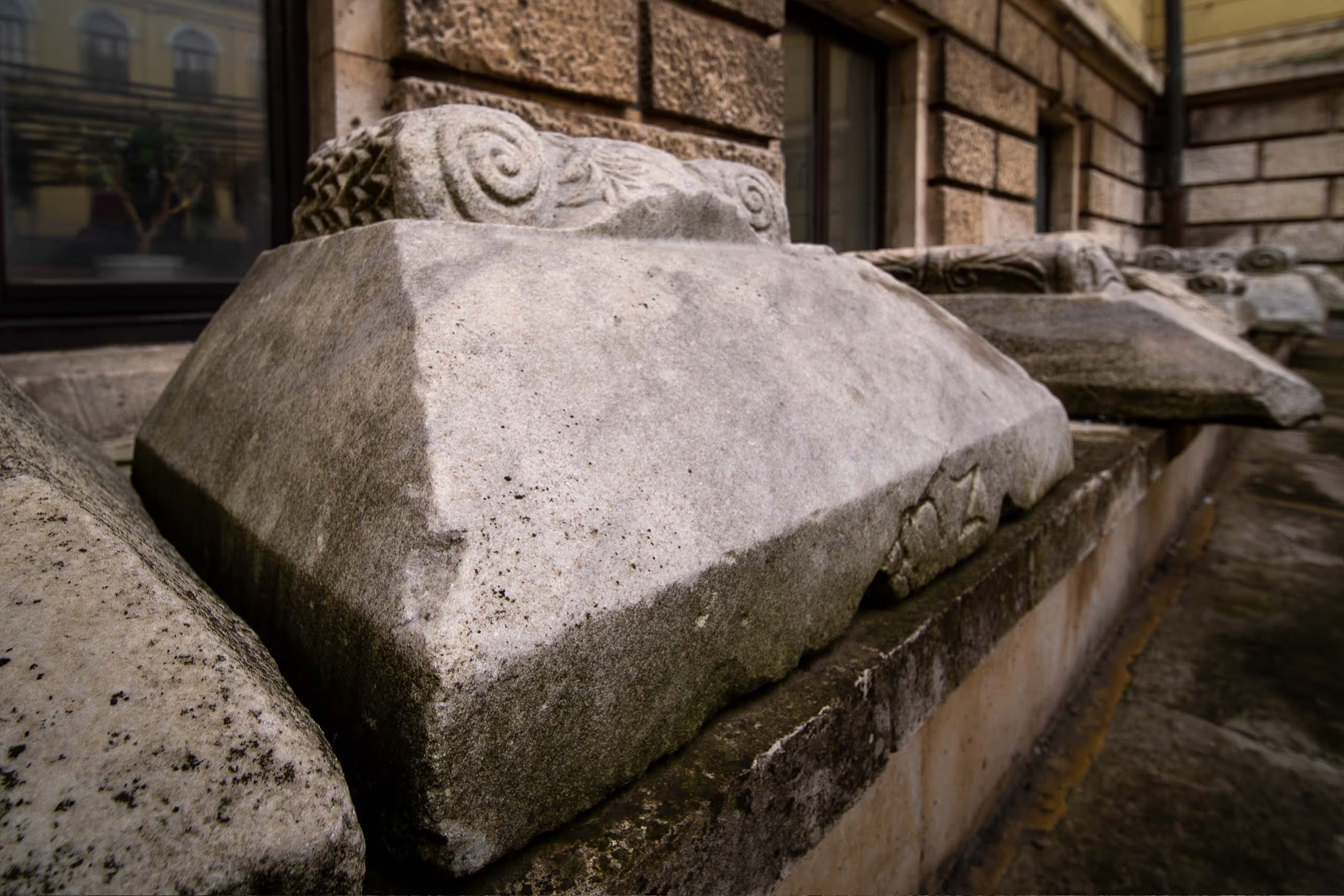
Датировка
4th - 6th century
Кратка информация
The archaeological site is a different Christian basilica, currently located on the island area, on the territory of a ship repair plant.
Already in 1909 The Varna Archaeological Society is excavating a mound located between the lake and the sea, known under the name "Pirinch tepe" or "rice bowl". At that time, the environment was a marshy and sandy area, later drained by the digging of the canal between the sea and the lake. During the excavation works for the canal, a large area - about 9900 sq.m. several thousand oak stakes with a length of 3 m were taken out, which, according to Shkorpil, were from "stake buildings". From the same place, 130 cubic meters of quarried and hewn stone came out, showing special holes for joining. More marble stones with ornaments and reliefs were discovered. The interest of the Shkorpil brothers attracted a part of a marble sarcophagus, decorated with a cornice and reliefs.
During the excavation of the mound with dimensions h=1m and a base of 65/45m, the Varna Archaeological Society registered an early Christian basilica. The two types of pavements point to two building periods of the temple. The coins found testify that the temple was built during the time of Constantine the Great (4th century) and was remodeled during the time of Justinian (6th century).
The archaeological structure is a three-nave single-apsed basilica with a narthex and a baptistery to the northeast corner. The temple measures 24m/18m. The naves are divided by two rows of 6 marble columns, and the narthex is divided by pilasters. In situ Shkorpil found 3 column bases and half a capital. The traditional scheme of an early Christian basilica is supplemented with pre-altar rooms, pre-apse space, baptistery and chapel. There is evidence that many of the building stones and internal architectural elements were found in the masonry base of the Asparuch shaft (also part of the altar). The flooring was made of marble slabs, and in the narthex - of square bricks. The excavations also found mosaic cubes, most likely from wall mosaics.
The Shkorpil brothers also described numerous and varied finds, such as pieces of the marble cornice, fragments of marble columns, balustrade pillars, parts of glass and ceramic objects, parts of marble statues and reliefs. The amount of copper coins found in the area is also significant - over 200 kg.
At the moment, the object is not socialized, it is located in the yard of a ship repair plant - Varna and access is highly restricted.
Местоположение
Pirinch Tepe area, on the island area under Asparuhov bridge, in the yard of Ship Repair Plant, Varna
Културна пренадлежност
Byzantine culture
Проучване
1909 - 1910 - archaeological excavations of the Shkorpil brothers; 1979 - Prof. Rasho Rashev: 1986 - Ph.D. Dr. Al. Minchev;
Техническо състояние
Poor technical condition
Статут /описан в АКБ/
National significance / S.G. 16/27.02.1968/
Режим на опазване /съгласно чл.35 от НАРЕДБА №7/
G
Актуални снимки
Архивни снимки
Подобни обекти

Park-Museum of the Battle Friendship 1444 - "Vladislav Varnenchik", 55 Yanosh Hunyadi Blvd., Varna

"Knyaz Boris I" Blvd., Archaeological Reserve "Odessos", Varna

Between Tsar Samuil St. and Primorski Blvd.; Archaeological Reserve "Odessos", Varna

Salzitsa area (Karaach teke), Varna

Aladzha Monastery area, Vinitsa district

Akchelar locality, Primorski district; Janavar tepe area /Ilan tepe/, Asparuhovo district; Gundyuza area, Galata district;





